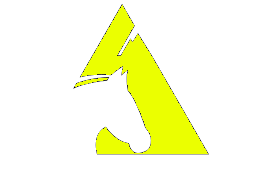Embarking on the Azadi Far Ride to the Murray in 2024 offers a thrilling adventure, whether you’re a hiker, cyclist, or horse rider.
Preparation is key, and we’ve created this insightful blog post as a guide for getting fit and ready for this epic journey.

General Trekking Preparation
How to Get Trek Fit
Trekking requires preparation, so we will share some of our valuable insights for hikers and cyclists alike. Whether you’re a novice or an experienced adventurer, these tips will help you get trek fit:
- Consistency and Persistence: Take a step-by-step approach to training in the months leading up to your trek. Build your fitness and strength gradually. Give yourself at least 3 months to get fit if you haven’t attempted something like this before.
- Variety in Training: Mix up your training routine to make it enjoyable. Include activities like biking, jogging, stairs, rowing, and swimming to improve endurance and work different muscle groups to prevent strain.
- Outdoor Trek Training: Train on varying, undulating terrain to simulate trek conditions. Walk with a weighted pack (8-15kg) to prepare for the challenges ahead.
Training Guidelines
We anticipate traveling anywhere from 30-50km/day but average 40km/day which is 8-10 hours trekking per day.
- Introduction level: When beginning your training, start with 30 minutes of aerobic exercise, three times a week, and hill or stair walking with a daypack.
- Moderate fitness level: When you feel comfortable with performing the 30 minutes, build up to 45 minutes of aerobic exercise, three to four times a week, along with hill or stair walking with a pack.
- Good fitness level: As you conquer 45 minutes of aerobic exercises several days a week, increase training to one hour of aerobic exercise, three to four times a week, and hill or stair walking with a pack.
It is important to perform the training with the equipment (pack, shoes, clothing etc…) you wish to carry with you when you do the trek. This allows the equipment to be worn in and conditions you to the equipment also, reducing the incidence of sores, blisters and chafe while on the trek. It also gives you an opportunity to identify any flaws or breakdowns that could occur in your equipment.
The more training and preparation you do prior to your trek, the more you’ll get out of it. Focus on building endurance, strength, and adaptability to fully enjoy the scenery, culture, and camaraderie during your trek.

Rider Preparations
Gradual Ride Introductions
For riders gearing up for the Azadi Far Ride to the Murray, gradual preparation is crucial:
- Start Short: As an introduction level start at 45 minutes of low speed, aerobic exercise three times a week, with hill work and saddle bags.
- Increase gradually: Gradually increase the duration of rides, incorporating speed interval training to mimic the variability of terrains and pace changes. Increase to one hour of aerobic exercise, three to four times per week, with hill work and saddle bags. Introduce faster speed intervals working up to being able to maintain a faster speed for 10 minutes per hour ride session.
- Good fitness level: After starting with shorter rides and progressively increasing both faster speed intervals and overall ride length you (and your horse) should be comfortable riding for a couple hours with faster speed intervals in each hour session.
Varied Riding Routine
Maintain a balanced riding routine:
- Mix It Up: Add variation to your training to increase exposure, strength and fitness while preventing boredom. Aim for approximately 80% of your rides to be on trails, gradually increasing both duration and faster speed intervals, but other exercise like indoor and swimming is of benefit.
- Personalized Approach: Understand yours (cyclist or rider) or your horses capabilities and tailor your training to match. Start with shorter rides (15-30 minutes) if needed, gradually increasing length over time.

Additional Tips
Strengthen Core
- Core Strengthening: Strong core muscles are vital for horses, their riders, cyclists, and hikers, as they contribute to balance, stability, and efficient power transfer. Core strength aids in injury prevention, enhances coordination, and provides stability on uneven terrains, ensuring a more enjoyable and effective experience for those engaged in these physical pursuits. Incorporating targeted core exercises, such as planks and leg raises for people, and pole work and pace changes for horses, is essential for overall strength and performance.

Incorporate Yoga
- Enhance Flexibility and Strength: Integrate yoga for strength, flexibility, balance, and mental focus. There is a wealth of poses for hikers, cyclists, horse riders and horses themselves. Adding them to your daily pre-trek warm-up helps to calm the body and mind and reduce the chances of injury, muscle cramping, soreness, etc…
Here are some basic poses to get you started. Remember start small and gently.
We hope with this guide, both hikers, cyclists, and horse riders will be well-prepared for the challenges of the Azadi Far Ride to the Murray in 2024, ensuring a memorable and enjoyable adventure along the Australian stock routes.

